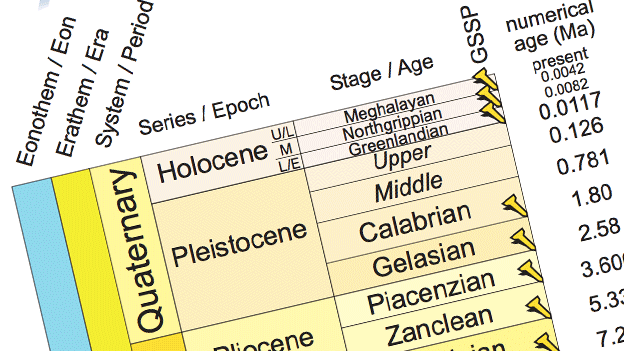The official history of Earth has a new chapter – and we are in it.
Geologists have classified the last 4,200 years as being a distinct age in the story of our planet.
They are calling it the Meghalayan Age, the onset of which was marked by a mega-drought that crushed a number of civilisations worldwide.
The International Chronostratigraphic Chart, the famous diagram depicting the timeline for Earth’s history (seen on many classroom walls) will be updated.

It should be said, however, there is disquiet in the scientific community at the way the change has been introduced. Some researchers feel there has been insufficient discussion on the matter since the Meghalayan was first raised as an idea in a scholarly paper six years ago.
….The Meghalayan, the youngest stage, runs from 4,200 years ago to the present. It began with a destructive drought, whose effects lasted two centuries, and severely disrupted civilisations in Egypt, Greece, Syria, Palestine, Mesopotamia, the Indus Valley, and the Yangtze River Valley.
It was likely triggered by shifts in ocean and atmospheric circulation.
The Meghalayan Age is unique among the many intervals of the geologic timescale in that its beginning coincides with a global cultural event produced by a global climatic event, says Stanley Finney, professor of geological sciences at Long Beach State University and Secretary-General of the International Union of Geological Sciences (IUGS), which ratified the ICS proposal.
….Already the decision to discriminate ages within the Holocene has drawn fire from some scientists who believe the move is premature. They question whether some of the climate shifts used as anchors for the new ages were truly global in their impact.
They are also concerned that the divisions have been approved when there is still an active debate about assigning a new geologic slice of time to reflect specifically the influence of humans on the planet.